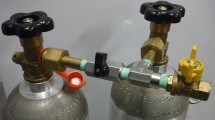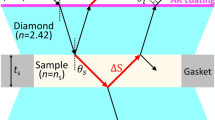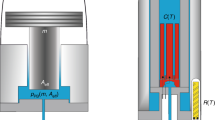Abstract
DURING preparations for the measurement of the density of mercury by weighing in it a cube of tungsten carbide of known volume, it was necessary to measure the surface tension force exerted by the mercury on the 0.002-in. diameter tungsten wire used to suspend the cube. The method developed for measuring the angle of contact and the behaviour of the angle of contact against an oscillating wire may be of more general interest.
This is a preview of subscription content, access via your institution
Access options
Subscribe to this journal
Receive 51 print issues and online access
$199.00 per year
only $3.90 per issue
Buy this article
- Purchase on Springer Link
- Instant access to full article PDF
Prices may be subject to local taxes which are calculated during checkout
Similar content being viewed by others
References
Yarnold, G. D., Proc. Phys. Soc., 50, 540 (1938); 58, 120 (1946).
Adam, N. K., and Jessop, G., Trans. Chem. Soc., 127, (Pt. 2), 1863 (1925).
Author information
Authors and Affiliations
Rights and permissions
About this article
Cite this article
COOK, A., STONE, N. Angle of Contact of Mercury against a Moving Tungsten Wire. Nature 174, 366–367 (1954). https://doi.org/10.1038/174366a0
Issue Date:
DOI: https://doi.org/10.1038/174366a0
Comments
By submitting a comment you agree to abide by our Terms and Community Guidelines. If you find something abusive or that does not comply with our terms or guidelines please flag it as inappropriate.



